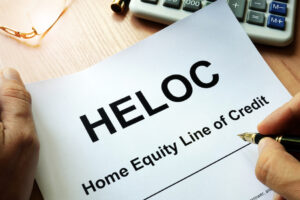 HELOCs, or Home Equity Lines of Credit, and closed-end home equity loans increased a whopping 50% in 2022 when compared to 2020 according to the Mortgage Bankers Association’s (MBA) Home Equity Lending Study, which has been rereleased for the first time since 2020.
HELOCs, or Home Equity Lines of Credit, and closed-end home equity loans increased a whopping 50% in 2022 when compared to 2020 according to the Mortgage Bankers Association’s (MBA) Home Equity Lending Study, which has been rereleased for the first time since 2020.
“Home renovations and remodeling drove demand for home equity products in 2022, with roughly two-thirds of borrowers citing it as a reason for applying for a home equity loan. Other borrower reasons were for debt consolidation (25%) and emergency cash management or other (10%),” said Marina Walsh, CMB, MBA’s VP of Industry Analysis. “The housing inventory shortage, combined with home-price appreciation and a low-rate first mortgage, make home renovations an attractive alternative for many homeowners who are looking to improve their spaces. Additionally, a HELOC or home equity loan is one way to finance big home projects while receiving a tax advantage through the deductibility of mortgage interest.”
Walsh continued: “Given the nearly $30 trillion of accumulated equity in real estate, there is untapped potential for home equity lending for lenders and borrowers. Respondents said consumer education, technological innovation, speed to delivery, and tailored products and marketing for specific customer segments are important initiatives for lenders to realize this potential.”
Top-level findings from the MBA’s 2023 Home Equity Lending Study include:
- Average HELOC commitment volume (total credit offered) was $2.4 billion per repeater company in 2022, up 41% from $1.7 billion in 2020.
- Weighted average HELOC loan balances on outstanding balances rose from $108,231 at the beginning of the year to $112,113 at year-end.
- HELOC utilization rates (dollar volume of outstanding balances compared to maximum credit facility) improved in 2022 when examining the rates across origination vintage-year cohorts. For example, average utilization at origination was 29% in 2020, 28% in 2021, and 30% in 2022.
- Irrespective of origination year, average HELOC utilization based on dollar volume was 34% in 2022, compared to 40% in 2020. The percentage of HELOC accounts with no outstanding balance as of year-end 2022 was 31%. The percentage of HELOC accounts funded to the contractual limit was 3%.
- The credit profile of the average HELOC borrower changed in 2022. The average FICO score fell to 769 in 2022 from 780 in 2020. Average combined loan-to-value (CLTV) for funded HELOCs at closing dropped to 51% in 2022 from 54% in 2020, due in part to strong home-price appreciation nationwide.
- On an annual basis, lenders expect HELOC debt outstanding to increase 8.2% this year and 9.9% in 2024.
Home equity loan data includes:
- Average home equity loan originations were $780 million per repeater company in 2022, up 166% from $293 million in 2020
- Weighted average home equity loan balances on outstanding balances rose from $52,653 at the beginning of the year to $61,114 at year-end.
- The credit profile of the average home equity loan borrower changed in 2022. The average FICO score fell to 752 in 2022 from 768 in 2020. Average CLTV at closing dropped to 58% in 2022 from 65% in 2020.
- Lenders expect home equity loan debt outstanding to increase 11.4 percent in 2023 but decrease 5.6% in 2024.
- MBA’s Home Equity Lending Study for lending and servicing open-ended HELOCs and closed-end home equity loans was conducted in the spring of 2023. MBA collected data from 20 member companies—including large banks, community banks, and credit unions—representing $37.8 billion in originations volume for 2022; $211.1 billion in maximum credit extended to borrowers as of December 31, 2022; and $81.1 billion in outstanding borrowings as of December 31, 2022. The report includes benchmarking data such as volume and product mixes, utilization rates, operational metrics, and growth expectations.

 theMReport.com Your trusted source for mortgage banking news
theMReport.com Your trusted source for mortgage banking news








